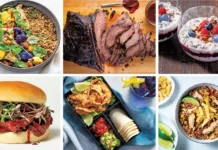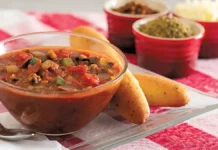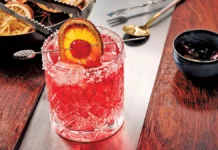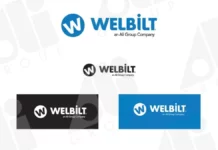
By Matt Drewes, SVP/Group Head, Restaurant at Cardlytics
The restaurant industry has had plenty of challenges over the last two years, including temporary closings due to the pandemic, adopting more ecommerce tools and dealing with labor shortages. Now, there’s uncertainty whether they’ll be able to keep the sidewalk tables that have allowed them to serve more customers despite local capacity restrictions. With all that in mind, the fact remains that restaurants need to generate more revenue to pay higher wages to keep employees happy and make up for lost sales of recent months.
The good news is that local restaurants and chain brands can lean into data to understand more about where their opportunities lie. Data can help them develop strategies for targeting loyal customers, acquiring new ones and getting them to come back regularly. There’s a wealth of data that can help them implement fixes too: purchase history, point of sale (POS) data, location data, channel-based signals, social analytics, etc. Such data can help brands be more relevant with their offers and make consumers feel more empowered about their decisions, which, according to Deloitte, is the No. 1 thing they want from restaurants.
While consumers are slowly returning to eateries, restaurants have to be smarter than ever with how they manage patronage. With the persistent labor shortage taking center stage, and the upcoming winter, here are a few ways for them to get it right.
Zero in on takeout crowd
There was a lot of hope among restaurant managers that when unemployment benefits went away for millions after Labor Day, job applicants would meaningfully pick back up. Yet, according to UKG’s September workforce activity report, shift volume in the retail, hospitality & food service industry still declined by 3.7%. This development, coupled with cold weather settling in in the north, means restaurants should target people who order takeout or delivery online to ease strain in person.
Right now, takeout or delivery customers are the most efficient patrons because they don’t tax the dining room staff, impact restaurants capacity, or increase wait times to be seated. Long term, takeout and delivery generate a larger customer base and more consistent streams of business without the added stress of staffing two hours of table service and risking exposure to COVID variants.
Lean into branded apps
When looking to attract patronage, mobile customers who order via an app can be targeted based on their individual preference (whether they frequently order online or sit down in person) based on day of the week or time of day. The more restaurants can drive digital orders through an in-app customer experience (CX), the more tables that restaurant can hospitably accommodate and the more they can maintain a healthy work environment for their staff.
With that in mind, it’s worth noting that Apple’s privacy-minded app-tracking policy change is impacting the data-targeting abilities on digital ad platforms such as Facebook and Snapchat, and cookies are going away, one web browser at a time. This means, first-party data is becoming increasingly important. Restaurant brands have been getting a steady stream of orders via third-party apps like GrubHub, Uber Eats, and DoorDash; however, as the larger data landscape dries up, restaurants need to invest in migrating those customers to their individual brand’s app to harness that first-party data. That data is privacy-proof and can be used to target customers with relevant, 1:1 messaging and convert them into loyal patrons down the road. Such digital marketing is going to be very difficult to do outside of first-party environments in future months, so restaurant brands should gear up now to take advantage of this data mine.
What’s more, these brands need to get in early and the apps need to be easy to navigate through the POS. Customers tend to only have a few “go-to” apps for ordering food, so restaurant brands need to focus on building a fluid CX from end to end to get customers to use the apps consistently. Starbucks and Panera are excellent examples for using mobile apps for customer self-service from ordering to pickup. Allowing customers to order past orders again incentivizes repeat customers to do just that: repeat order. These features not only give today’s mobile-minded customer more control over the CX, but they also alleviate customer volume for an already-strapped restaurant staff and give restaurant brands that insurance policy so they can tap into their own customer database for future marketing efforts.
Ease staffing with loyalty programs
The restaurant labor shortage isn’t just a front-of-the-kitchen staffing issue, it’s also impacting delivery drivers. Digital loyalty programs can generate online revenue without driving too much foot traffic or time in restaurants like a print coupon might. Via GrubHub, some restaurants are offering $5 or $10 discounts to loyal customers if they pick up their order in person, alleviating strain on delivery drivers.
Plus, consumers want loyalty programs. Consider that a 2021 Fast Casual Dining Survey found that nearly half of respondents would like to see more loyalty programs from restaurants. It’s why Chipotle, Panera, Subway and Five Guys often run loyalty campaigns with 5% or 10% cashback. Further, a savvy restaurant brand might incentivize customers based on their particular staffing issues, offering cashback for customers who order online for pickup when delivery drivers are low or vice versa.
Embrace CX to win the long game
The fact remains that these problems aren’t going away anytime soon. The labor shortage is widespread, bad weather threatens outdoor dining, and third-party data sources are drying up, meaning restaurants need to act now to invest in digital strategies that will alleviate their individual pain points. The best way to do that is for brands to tap into data to identify trends and craft the strategy fixes that are mutually beneficial for the brand and customers. Today’s restaurant marketer needs to practice these principles to thrive under any market condition.
 Matt Drewes is SVP, Group Head, Restaurant at Cardlytics, where he has been an executive since 2012. Matt has more than 20 years of domestic and abroad sales and marketing experience in the restaurant, food service, and CPG industries. He resides in Orlando, FL, and can be reached at mdrewes@cardlytics.com.
Matt Drewes is SVP, Group Head, Restaurant at Cardlytics, where he has been an executive since 2012. Matt has more than 20 years of domestic and abroad sales and marketing experience in the restaurant, food service, and CPG industries. He resides in Orlando, FL, and can be reached at mdrewes@cardlytics.com.























